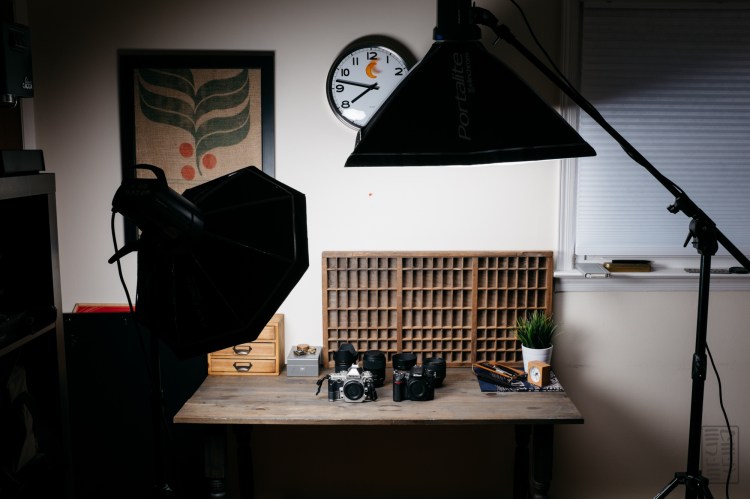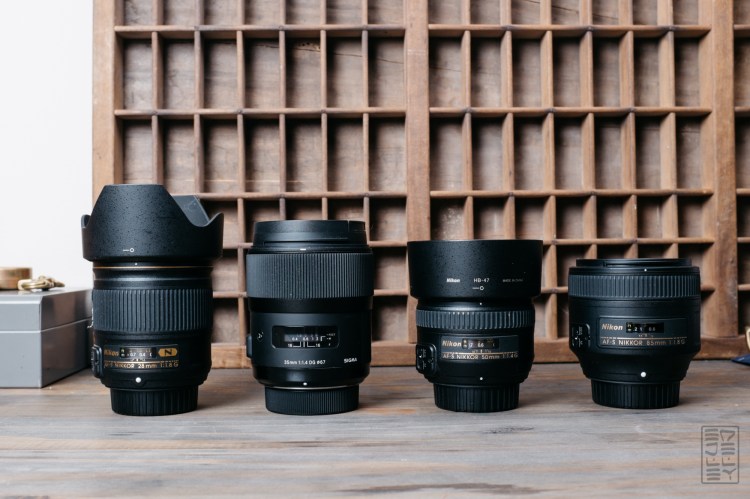Recently, I got a request from Thomas Xavier on Twitter asking to outline my gear and photo setup. The blog is very photo-heavy and it’s been a journey that’s gone from miserable pictures taken on my phone to offering commercial photography services. It’s been an evolution for sure, so let’s take a look at what I started with, and what I shoot with now.
 Before getting into this, I want to say a few things about gear. Yes, I currently use some pretty expensive stuff, but I really don’t think that it is completely necessary. The sentiment that an expensive camera is all you need to take good photos is just plain wrong. While the right tools for the job certainly help, more gear doesn’t mean more skills. Learn how to shoot in manual mode, understand the exposure triangle, read your camera manual, look for the best light, and composition matters way more than the amount of megapixels that your sensor can pump out. Researching how to post-process your images is also huge, and is a completely different task from shooting. Nearly every photo on the site gets post-processed in Lightroom which helps me get the look I’m going for.
Before getting into this, I want to say a few things about gear. Yes, I currently use some pretty expensive stuff, but I really don’t think that it is completely necessary. The sentiment that an expensive camera is all you need to take good photos is just plain wrong. While the right tools for the job certainly help, more gear doesn’t mean more skills. Learn how to shoot in manual mode, understand the exposure triangle, read your camera manual, look for the best light, and composition matters way more than the amount of megapixels that your sensor can pump out. Researching how to post-process your images is also huge, and is a completely different task from shooting. Nearly every photo on the site gets post-processed in Lightroom which helps me get the look I’m going for.
 At the start
At the start
The first photos on the site go as far back as 2012. The first 5 posts or so were taken on my phone. I think it was an HTC or Samsung Galaxy. I’m not sure.
Moving forward, I snagged an Olympus Pen EP3 Micro 4/3 camera. This was my first “real” camera and it was hugely helpful in learning how to properly expose a photo. Since there was an electronic viewfinder, you were able to preview the exposure in real time. This way, I could really learn what shutter speed, aperture, and ISO did. Initially I used the kit zoom lens, but picked up the awesome 17mm f/1.4 prime. It had a 35mm equivalent field of view and I absolutely loved this little kit.
 In Between
In Between
I very very briefly used a Canon 7D with some zoom lens I stole from my then-girlfriend (now wife). This setup was my first “real” camera and I absolutely loved it. The larger sensor, off camera flash, and image quality was leaps and bounds ahead of what I was using before. After learning the basics of photography on the Olympus, moving to the Canon was actually pretty easy. At this time, I was mostly using natural light and just starting to dabble with flash.
Currently
A large chunk of my current photo setup was acquired under less than ideal circumstances. My uncle was a photo enthusiast and had recently updated all his gear. He suddenly passed away, and as the “camera guy” in a really small family, all of the gear went to me. Not only is some of this stuff way better than what I could afford, it has sentimental value as well. I have purchased a decent amount of this gear too, but this is what I currently use.
- Nikon SB-900 Speedlite
- Nikon SB-700 Speedlite
- Nikon Wireless Flash Controller
- Elinchrom D-Lite RX 4/4 Softbox To Go Kit
- Elinchrom EL-Skyport Controller with High Speed Sync
- Various Softboxes, octaboxes, stands
- Manfrotto 420B Combi-boom stand
- Manfrotto tripod w/ 90º extension arm
Miscellaneous:
- DSPTCH Daypack
- Camera bag insert
- Lowepro Event Messenger 250
- Ikea RASKOG Rolling Stand
- Mystudio Seamless White Tabletop Backdrop
- DSPTCH Camera Strap
- Generic Shutter Release Buttons
- SanDisk 16GB memory cards
- Adobe Lightroom
- VSCO Film Plugins
Honestly, there’s probably a ton more stuff. Things just tend to pile up. I definitely have to go through my stuff and sell some off. In the complete opposite spirit, I have a Fuji XT-2 on the way with the 35mm f/2 WR on the way. I’m excited to have a camera that can shoot in 4K video. I’ve been really happy with my X100T (that I picked up in 2014 when it was released) and I am excited to have something from Fuji in a different form factor with more megapixels, a better sensor, and interchangeable lenses. For a while, I was shooting with the off camera flashes inside some softboxes, but it became a huge pain in the neck to keep a million rechargeable AA batteries around. The Elinchrom setup is way more powerful (which took some getting used to) but having studio lights that are small, powerful and portable is a game changer.
 Most Used
Most Used
My most used combo would have to be the Nikon Df w/ the Sigma 35mm ART lens attached. The lens is razor sharp and the 35mm FOV allows me to take tabletop shots without having to climb up a ladder. One downside is how heavy the lens is though, especially when paired with the lighter Df. The D7000 really only comes out when I have to do video, but I suspect that it will be completely replaced by the XT-2 when it shows up. The X100T is ALWAYS in my bag. It’s small and light, and the fixed 35mm equivalent lens is wonderful. This small shooter is ultra portable and low profile. Since it has built in Wifi, the camera is great for shooting and even editing on the go. I just beam shots over to my phone and edit them there. Depending on how small the XT-2 is, I think that it has a chance of replacing the X100T in my bag.
Final Words
Like I said earlier, getting all the gear is not the key to making great photos. It takes a ton of time, practice, and research. For me, photography doesn’t end after the shutter click. It continues into post-processing in Lightroom and some Photoshop if needed. I’m always grateful for the comments about my photography, as it has been and continues to be the driving force behind my blog.
Want my photos for your brand? Check out my commercial photography services over at edjelleyphoto.com and drop me an email. I’m happy to work with all clients, whether stationery-related or not.
If you have any questions, make sure to drop em’ in the comments below!





Thanks for sharing your transition from cell phone to the DSLR cameras. I shoot with a Nikon D5300 and I’m torn between the Nikon D750 or one of the mirrorless cameras that have come out, for my next set up.
Thanks for reading! I was between picking up a D750 or the Fuji XT-2 and I opted for the Fuji.
Thanks for such a thorough response, your photos are always really nicely framed- nice to know whats behind the lens now! Super jealous of your Nikon DF.
I have a 5D, Sony A6000 and a Olympus XZ-1 and I tend to favour to Olympus- at least for my stationary shots- I am looking into getting a lightbox but I have to admit I am biased towards natural light. Seems to work for me in any case.
Thanks again mate!
Thank you! The DF has been pretty great. While a more modern SLR has slightly better ergonomics, the awesome sensor in there and more compact body make up for it.
Definitely don’t be afraid of using artificial lighting. I think that it gives you more control over the photo situation. With some practice you can get a softbox and an off camera flash to look a lot like diffused window light. Using off-camera lighting was a game changer for me.
Thank you for prompting this post, I had a good time writing it!